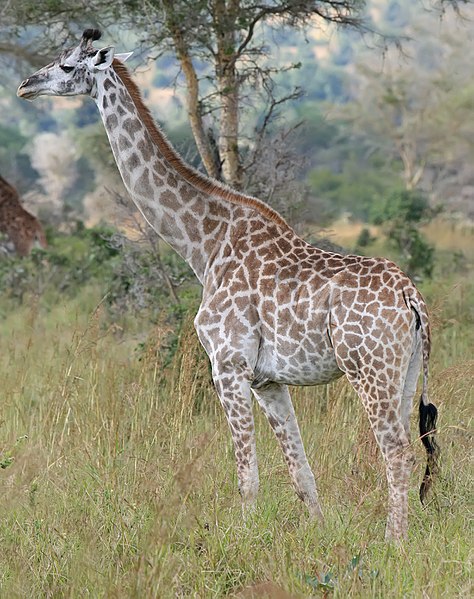Camelopardalis is a large but faint constellation of the northern sky representing a giraffe. The constellation was introduced in 1612 or 1613 by Petrus Plancius. Some older astronomy books give Camelopardalus or Camelopardus as alternative forms of the name, but the version recognized by the International Astronomical Union matches the genitive form, seen suffixed to most of its key stars.
The constellation Camelopardalis as it can be seen by the naked eye.
Camelopardalis as depicted in Urania's Mirror, a set of constellation cards published in London c.1823. Above it are shown the now-abandoned constellations of Tarandus and Custos Messium.
The giraffe is a large African hoofed mammal belonging to the genus Giraffa. It is the tallest living terrestrial animal and the largest ruminant on Earth. Traditionally, giraffes have been thought of as one species, Giraffa camelopardalis, with nine subspecies. Most recently, researchers proposed dividing them into up to eight extant species due to new research into their mitochondrial and nuclear DNA, and individual species can be distinguished by their fur coat patterns. Seven other extinct species of Giraffa are known from the fossil record.
Giraffe
The extinct giraffid Samotherium (middle) in comparison with the okapi (below) and giraffe. The anatomy of Samotherium appears to have shown a transition to a giraffe-like neck.
Giraffe skeleton on display at the Museum of Osteology, Oklahoma City
Closeup of the head of a northern giraffe






